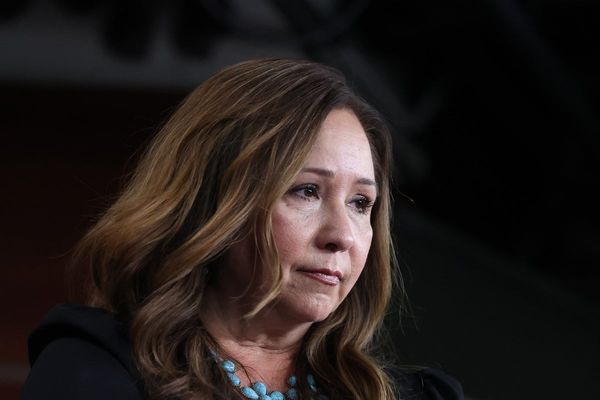
The US supreme court ruled on Monday that the former president Donald Trump cannot be kept off the ballot in Colorado, foreclosing a series of legal challenges the Republican frontrunner faced in multiple states as he seeks a return to the White House.
The 14th amendment’s third clause, enacted after the US civil war, seeks to prevent people who were elected officials who engaged in insurrection from then holding office again. It has been rarely used since, but was resurrected by advocacy groups and voters who claim it applies to Trump because of his attempts to overturn the 2020 election results.
The court’s nine justices agreed that a state can’t remove a federal candidate from its ballot. Though the decision was unanimous, briefs filed separately indicate tension among the justices about how far the majority opinion went.
Because the case involved an obscure part of the constitution, the court had to parse questions of how the clause works and to whom it applies. And, perhaps most critically, the court’s decision held tremendous capacity for disruption during an election year with a leading candidate known to rile up his followers.
Here are some key takeaways from the decision and the broader context at play.
State v federal rights at heart of issue
The core of the decision rests simply on the interplay between state and federal rights.
Though states administer federal elections, the court decided states have no authority to remove a candidate from the running under section 3. Instead, the majority opinion noted, the 14th amendment “expanded federal power at the expense of state autonomy”. Allowing states to do as Colorado did would “invert the Fourteenth Amendment’s rebalancing of federal and state power”.
The language of the clause doesn’t include any direction on how a state could enforce it, the majority said. Only Congress is mentioned as an enforcer, they argue.
States could, and did, use the section to disqualify state candidates from holding office if they violate the insurrectionist clause, the majority wrote.
This federalism argument was clearly agreed to by all nine justices – though the majority opinion goes on further to suggest how Congress might act to enforce the clause in the future.
Justices Amy Coney Barrett, Sonia Sotomayor, Elena Kagan and Ketanji Brown Jackson all wrote, in two separate opinions, that the majority opinion went too far.
The decision that states lack the authority here “provides a secure and sufficient basis to resolve this case”, the liberal justices (Sotomayor, Kagan and Jackson) wrote. “The Court should have started and ended its opinion with this conclusion.”
Tension among the justices on how far the ruling goes
The justices’ unanimity in the belief that the Colorado court couldn’t remove Trump was fractured by two addendums that strike at the extension of the case beyond its scope.
The court’s majority – the conservative justices John Roberts, Brett Kavanaugh, Samuel Alito, Clarence Thomas and Neil Gorsuch – specified how the insurrectionist clause would need to be enforced. It would require an act of Congress to determine who would be ineligible to hold office because of insurrection, they wrote, relying on another section of the 14th amendment to make the case.
The liberal justices, in one separate opinion, and the conservative Barrett, in her own, said the majority went too far by prescribing what kind of process would be needed.
The case did not require the justices to “address the complicated question whether federal legislation is the exclusive vehicle through which Section 3 can be enforced”, Barrett wrote. Because of the sensitivity of the issue and its context, the justices should have left it with the federalism justification alone. “In my judgment, this is not the time to amplify disagreement with stridency,” she wrote.
The liberal justices took this disagreement further, saying the majority opinion moved into constitutional questions it didn’t need to as a way to “insulate this court and petitioner from future controversy”.
The case did not involve federal action; it was a state court in Colorado that decided Trump could not be on the ballot there. The majority did not need to move into contested federal issues, the liberals said. “These musings are as inadequately supported as they are gratuitous.”
No decision on whether Trump engaged in insurrection
What’s left entirely unsaid in the court’s opinions issued on Monday is whether Trump engaged in insurrection.
A finding that Trump had himself engaged in insurrection would have been required for keeping the former president off the ballot. The clause says that a person could be disqualified from holding office again if they had “engaged in insurrection or rebellion”.
Trump and his team fought against this claim, saying his actions after the 2020 election did not constitute an insurrection. Instead, he argued, January 6 was more akin to a “riot” and his comments to his followers, which some have contended amounted to incitement, were protected by the first amendment. In Colorado, the state supreme court had concluded that he incited his followers to engage in insurrection, which met the definition for engaging in insurrection.
The legal cases against Trump over his election subversion will continue unabated by any opining by the high court about whether he is an insurrectionist.
The potential for mayhem/violence was high because of this case
The 2024 election was already marked by tension because of the presence of Trump; his ability to direct his followers is unparalleled in American politics.
The cases against Trump in several states – for election subversion, hush-money claims, keeping classified documents and business fraud – have not injured his standing with his followers, but instead seemingly solidified or even amplified their support.
The 14th amendment cases entered into this fraught dynamic, throwing yet another legal bomb, albeit an obscure one, that gave Trump’s followers further belief that there is a conspiracy against Trump’s ability to run for re-election.
On the campaign trail, Trump has used these legal liabilities to his benefit, claiming they are evidence of election interference and a sign that President Joe Biden, not he, is a threat to democracy.
A survey focused on political violence conducted by the University of Chicago’s Chicago Project on Security & Threats in January showed that the court’s decision on the 14th amendment held the potential for further support of political violence, regardless of how the court decided, because of the extreme partisan divide on the issue.
Trump called the decision “very well-crafted” and said he thought it would bring the country together. Most states were “thrilled” to have Trump on the ballot, he said, but others didn’t want him on there for “political reasons” and because of “poll numbers”.
The court clearly considered the political implications
While courts often claim to avoid wading in on political questions, politics clearly played into how the court decided on this case. The implications of how removing Trump could play out electorally are contemplated throughout the opinions.
The potential that a candidate could be ineligible in some states, leading to a “patchwork” effect, would disrupt voters, the majority wrote in their opinion.
“An evolving electoral map could dramatically change the behavior of voters, parties, and States across the country, in different ways and at different times,” the majority wrote. “The disruption would be all the more acute – and could nullify the votes of millions and change the election result – if Section 3 enforcement were attempted after the Nation has voted. Nothing in the Constitution requires that we endure such chaos – arriving at any time or different times, up to and perhaps beyond the Inauguration.”
It wasn’t just politics with the election itself or the public at large that came into view; the political dynamics between the justices showed through as well.
The liberal justices jabbed at the majority opinion for its extension of the case into how Congress would need to act, claiming that was an attempt to “insulate all alleged insurrectionists from future challenges to their holding federal office”.
Barrett, in her separate opinion, tried to strike a conciliatory note. She called attention to the fact that the court unanimously decided on a “politically charged issue in the volatile season of a Presidential election”. The court’s goal, she said, should be to turn down the national temperature instead of inflame it.
“For present purposes, our differences are far less important than our unanimity: All nine Justices agree on the outcome of this case,” she wrote. “That is the message Americans should take home.”







